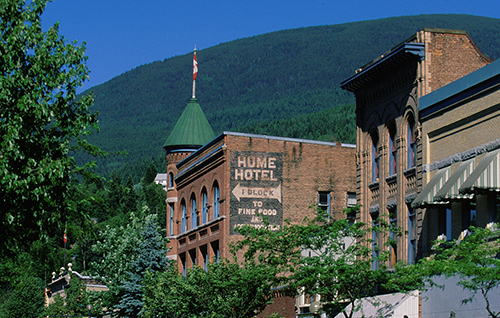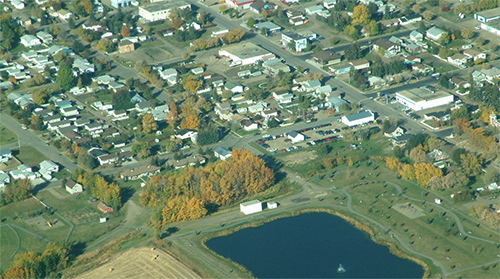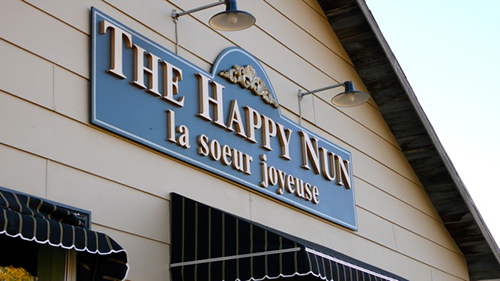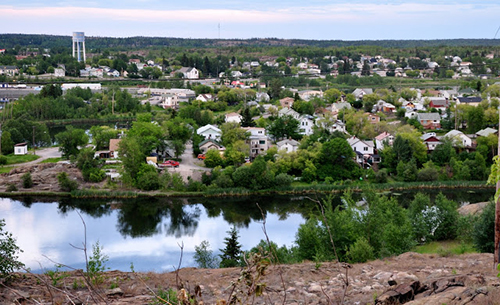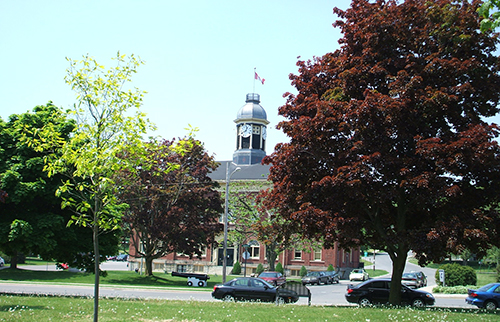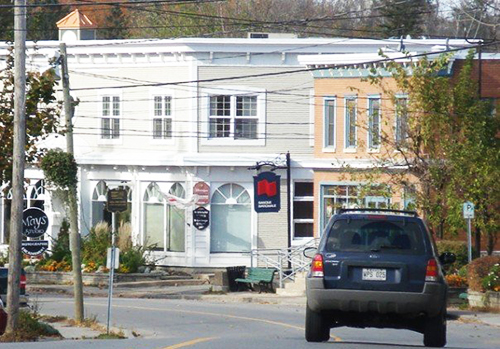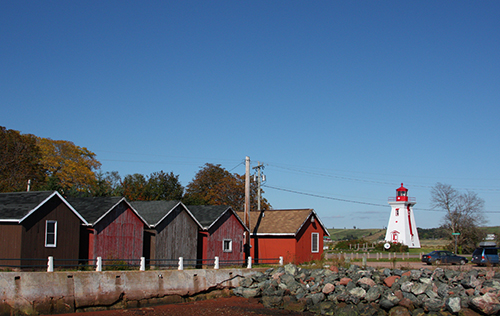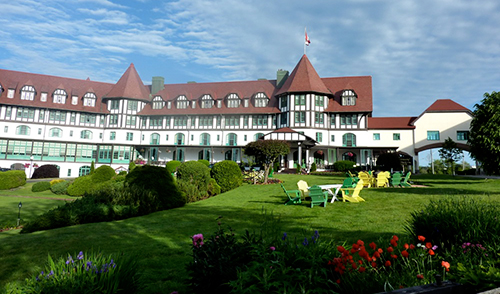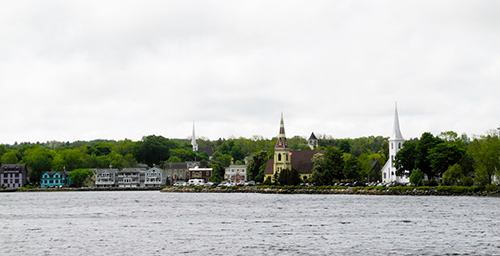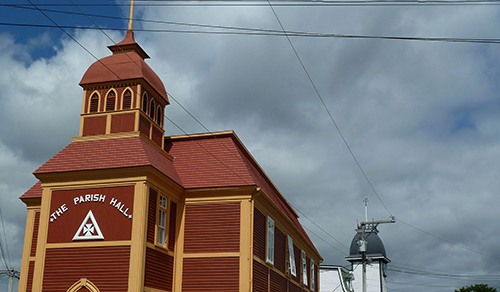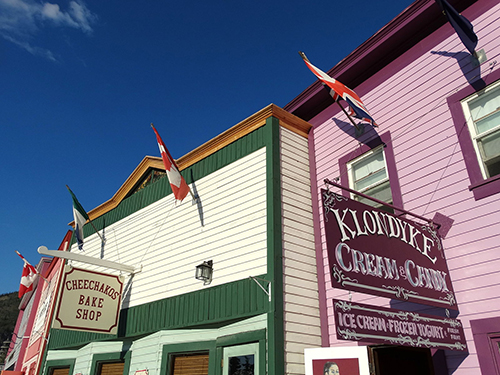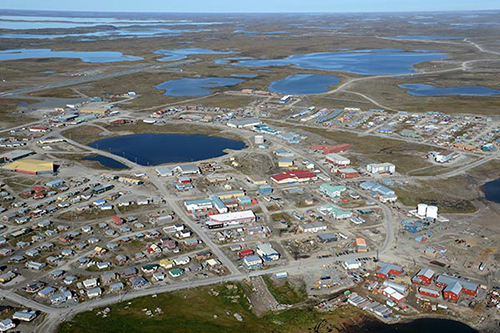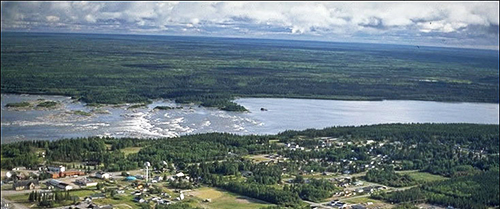British Columbia: NELSON
With a population of just over 10,000, the town of Nelson has traditionally relied on the abundant natural resources that surround it, forestry and mining. Resting against the shores of Kootenay Lake, one the largest in BC, the town’s laid-back lifestyle, location and quality of life has transformed it into an important arts community – an escape for artists, writers and musicians. An eight-hour drive to either Vancouver or Calgary, the scenic mountain community has preserved its downtown heritage buildings, and many Victorian-era homes. Nelsonites embrace all forms of spiritual practice, and more than a few hippies have washed upon its shore. Organic food and farmers markets are plentiful, adding to the healthy outdoor lifestyle of hiking, fishing and watersports in the summer, and skiing, sledding and skating in the winter. The community is known to be supportive, creative, and accepting, with a thriving music scene and coffee shop culture.
Alberta: LEGAL
Just 50km north of Edmonton on Highway 651 is a satellite community so clean and peaceful you’d think you stepped into another era. Originally founded as a Francophone settlement, Legal is still a bilingual town, with a population of just 1225. Surrounded by farms and fertile land, the town serves the surrounding agricultural community, but is close enough to Edmonton that many if its inhabitants commute to the big city for work. Legal is known as the French Mural Capital of Canada, with 28 colourful murals decorating the town. Every July, it holds a festive event called the Fete Au Village, which brings the community together, and celebrates it French culture. Citadel Park, a 12-acre area, is the town’s main recreational area, with an indoor arena, curling rink, baseball diamonds and playgrounds. Low crime, clean streets, tight community spirit – no wonder Legal beat out 52 other rural communities in Alberta in a competition to host a large cultural festival.
Saskatchewan: FORGET
We can’t forget the small prairie towns of Saskatchewan, especially a town with the name of Forget. Pronounced “for-jay”, the sleepy settlement sits at the southeast corner of the province. Without a school, bank, post office or even grocery, it’s nevertheless seen a resurgence of sorts as a sanctuary for artists and performers. The old rectory, built in 1904, has been revived as The Ananda Arthouse, with a mandate to support arts in southeast Saskatchewan, with performances in the 40-seat theatre, and a variety of exhibitions. Another popular hangout is the Happy Nun Café, which serves the community as a restaurant, event and meeting place. The folks of Forget are devoted to the future of a rich rural life in Saskatchewan.
Manitoba: FLIN FLON
This old mining town on the Manitoba-Saskatchewan border is noteworthy, and not just because it is named after a character in a turn-of-the-century science-fiction novel (the town was named after Flintabbatey Flonatin, a fictional explorer in The Sunless City). Flin Flon has the tallest freestanding structure in Western Canada, the Hudson Bay smokestack, which towers 251m above the town. Located in the heart of the province’s Lake District, it hosts a popular Trout Festival every July, attracting fisherman from around the world. The Flin Flon Bombers also boast a farm team for the NHL’s Philadelphia Flyers. Because the town is built on solid rock, its unique sewer system runs above ground in wooden boxes. Renowned American artist Frank Stella created some of his most famous print work in the town, known as the Flin Flon series. Not bad for a mining town of just over 5000 people.
Ontario: PORT HOPE
Southern Ontario’s Port Hope, located 100km east of Toronto, boasts the province’s best-preserved 19th century downtown streetscape. Passengers passing through on VIA Rail enjoy views of the historical centre and well-maintained century homes, as the tracks were laid above the town. Port Hope is known as the antique capital of Ontario, where its 16,000 citizens can step into the past, or watch a movie in The Capitol Theatre, the oldest running fully operational atmospheric theatre in the country. Just in case you thought all this comes with an antique stodginess, the town’s sense of humour is represented by its annual Float Your Fanny Down the Ganny celebration. Every April, contestants enter the 10km race in canoes, kayaks and crazy crafts to commemorate a town flood.
Quebec: HUDSON
Hudson is located 35 miles west of Montreal, a picturesque little town settled mostly by immigrants from England, Scotland, Ireland and the USA. Resting (look, I avoided the word “nestled!”) against the Ottawa River, the town (population 5000) is surrounded by forests and farms, with a prosperous lot of bilingual residents. Around half of the businesses are involved in arts and crafts, with wares available in a popular flea market. Hudson hosts several festivals throughout the year, including a Street Fair, Shiver Fest, a St Patricks Day Parade, and several prominent regattas. By all accounts dining is first class (with a shout out to Bistro Carambola, which is well worth checking out). Although it has become a satellite community to Montreal, Hudson continues to draw attention as one of the most pleasant towns to live in the province.
Prince Edward Island, VICTORIA-BY-THE-SEA
Recalling another era, this charming small fishing village consists of just four blocks, dotted with old Island homes, painted in bright colours. Sitting on the shores of the Northumberland Straight, the historic seaport village of Victoria-by-the-Sea has become something of an artist enclave, with painters, potters and sculptors joining lobster fishermen and farmers in the 200-strong community. Old village hotels offer high tea, while there’s tiny art galleries where visitors can do pottery and candle making. Bike and kayak rentals are available to explore the red sandy beaches and old lighthouse museum, all in a relaxed storybook setting.
New Brunswick: ST ANDREWS-BY-THE-SEA
St Andrews-by-the-Sea was Canada’s first seaside resort community. The permanent population swells in the summer, as the town blossoms into everything you’d expect from a summer destination. The famed Algonquin Hotel recalls a grand era of CPR railway hotels, adjacent to an excellent golf course. Down on the marina, tourists feast on lobster rolls and fresh seafood at a strip of excellent restaurants, taking whale-watching excursions into the Bay of Fundy. Town colour is further illustrated by a series of wonderful murals, and old shops selling time-honoured treats. Green thumbs will love the manicured Kingsbrae Gardens, or sitting in the sun, enjoying a beer on a patio amongst friendly and welcoming locals.
Nova Scotia: MAHONE BAY
Mahone Bay is a picture-perfect maritime town. With a population of just over 900, it sits in a bay with access to more than one hundred islands. Booming in summer tourism, upscale shops and restaurants line the main street, offering plenty of romantic, outdoor and weekend getaway escapes. For the active set, the surrounding area features miles of trails to explore the South Shore on foot, bike or skis. The town itself is full of 19th century architecture, recalling Mahone Bay’s glory days as a wooden shipbuilding centre. The town’s iconic three churches are said to be the most photographed in all Canada.
Newfoundland & Labrador: TRINITY
Since the early 1700’s, Trinity served as important fishing port, blessed with a large scenic harbour, and land deemed fit for shipyards, wharves and fisheries. The preservation of this historical and cultural legacy has made it one of the most famous heritage towns in the province. Located three hours drive from St John’s, the town’s permanent population is under 200, but it receives a steady flow of tourists, drawn to the preserved buildings, old churches, natural beauty and various old-world museums. Visitors can stay in a variety of B&Bs, cottages and inns, visiting art galleries, historical monuments, and a local theatre.
Yukon: DAWSON CITY
Dawson City was once the largest city west of Winnipeg and north of San Francisco, known as the Paris of the North. The 1898 Klondike Gold Rush brought tens of thousands of prospectors to this small town, most of which returned penniless, their fate immortalized in the legendary poems of Robert Service. Today, with a population of around 1300, the well-preserved town is home to several national historical sites, and draws thousands of tourists visiting Yukon or Alaska. Visitors can still pan for gold, or visit heritage homes and museums. Dawson City’s Downtown Hotel is also home to the Sour Toe Cocktail, the most infamous drink of the North (and on The Great Canadian Bucket List)
Nunavut – RANKIN INLET
With fewer than 2500 people, the hamlet of Rankin Inlet is the second most populous community in Nunavut. Although Iqaluit defeated Rankin to become Nunavut’s capital, Rankin Inlet is well known for its artist community, particularly in ceramics, print, carvings, casting and painting. Rankin serves as the business and transportation hub of the Kivalliq region, and offers services absent from many northern communities. These include cell phone service, cable, satellite, recreational facilities (golf, volleyball, indoor arenas and outdoor fields). The surrounding landscape is largely untouched, with the Iqalugaarjuup Nunanga Territorial Historic Park a popular spot for hiking, fishing and bird watching. The community comes together for craft shows, square dances, Pakalluk Time (a town festival) and Christmas activities.
Northwest Territories: FORT SMITH
Fort Smith a multicultural community surrounded by boreal forest, with a population of 2500. The town sits at the gateway of Wood Buffalo National Park, the largest national park in Canada, and one for the Bucket List. Townsfolk enjoy summer activities amongst pristine beauty, including kayaking, hiking, biking and golfing. For rafters, the Slave River presents some of the most challenging rapids on the continent. Sitting on the banks of the Slave River, community spirit is stoked with the South Slave Friendship Festival in August and the Wood Buffalo Winter Frolic in March, attracting artists and musicians from around the territory. Visitors are also drawn to the Forth Smith’s Northern Life Museum and Cultural Centre.
